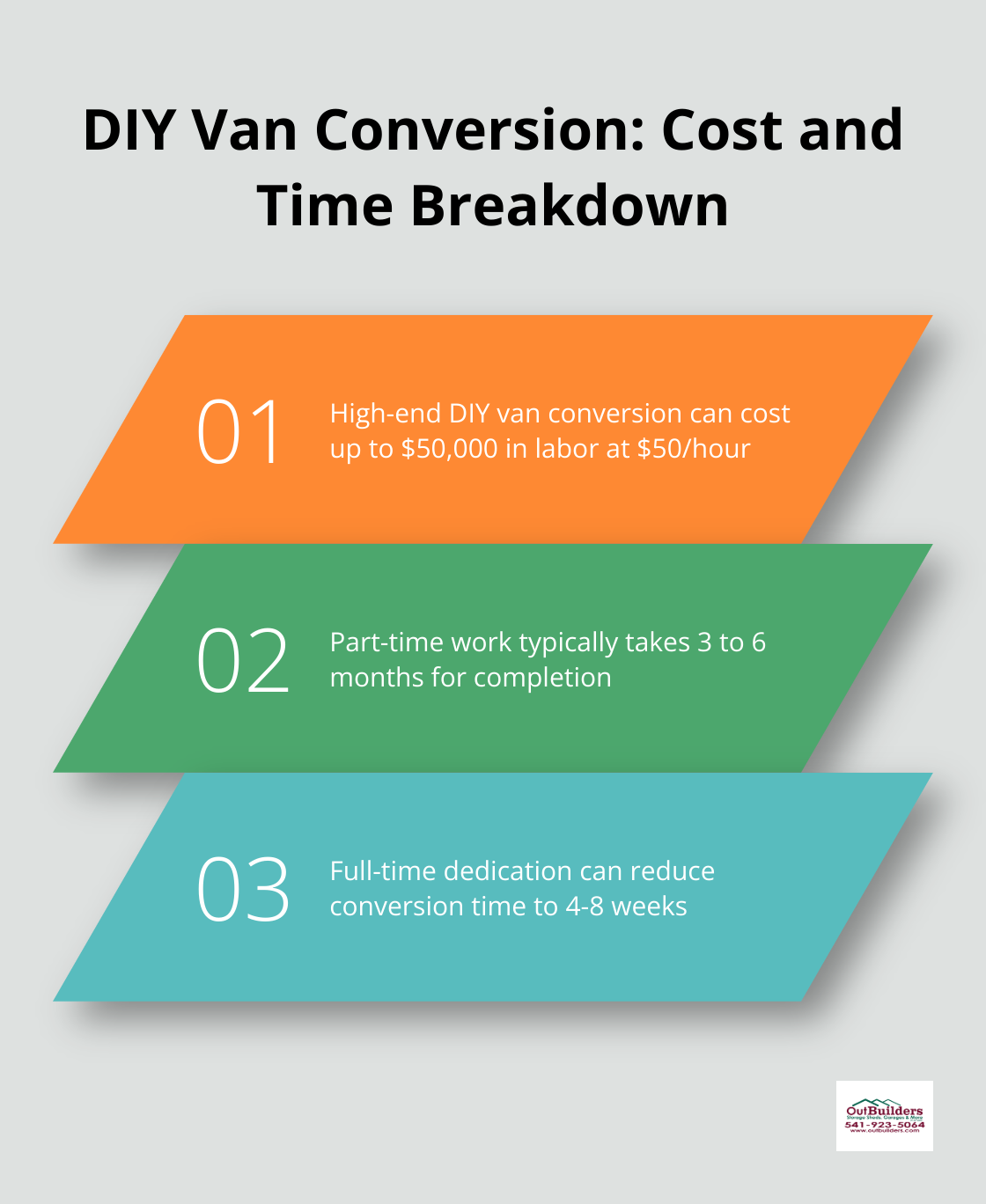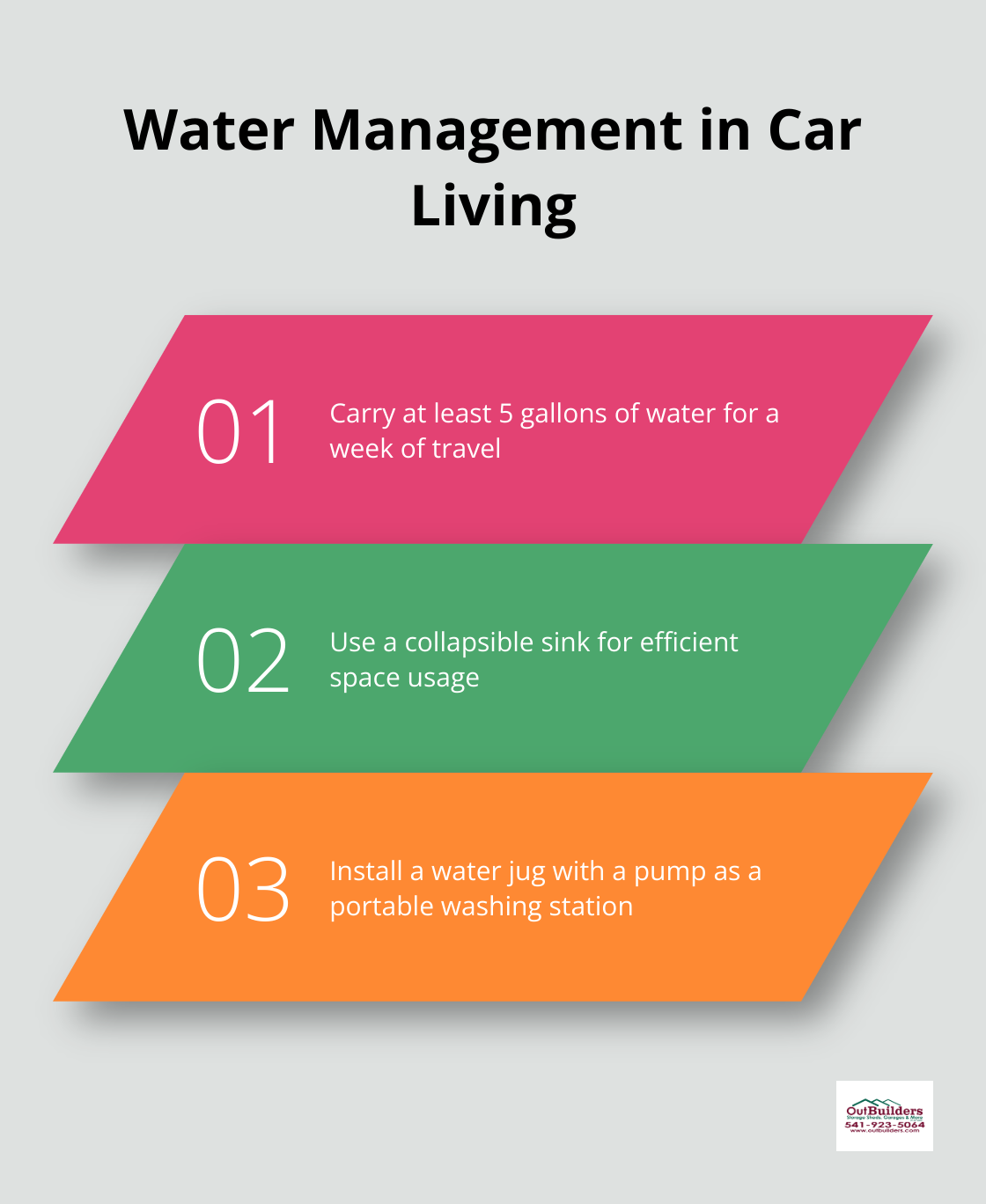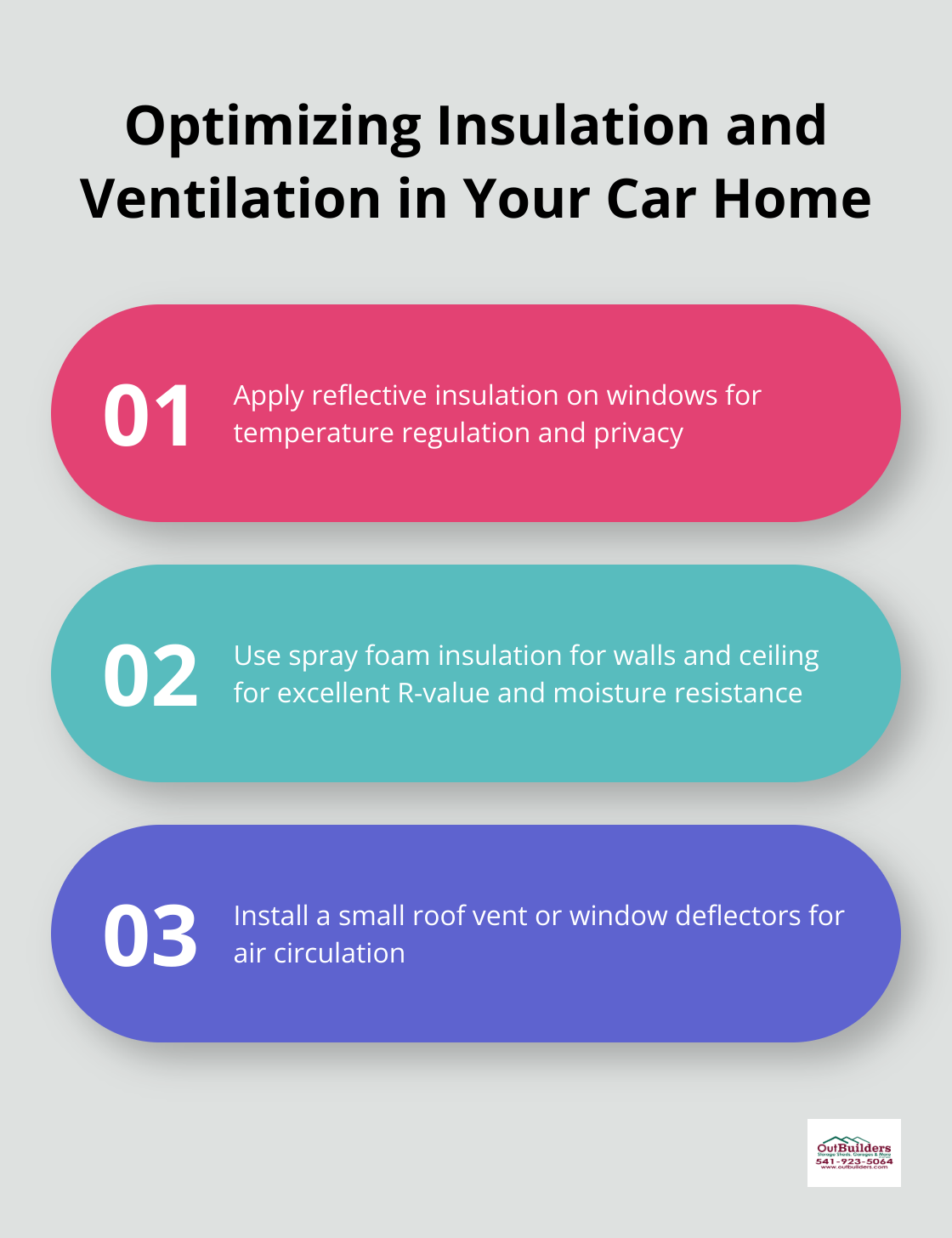At Outbuilders, we’ve seen a growing trend of people transforming their cars into tiny homes on wheels. This innovative approach to mobile living offers freedom, flexibility, and a unique way to explore the world.
In this guide, we’ll walk you through the process of converting your car into a cozy tiny home, covering everything from planning to essential modifications and space-saving tricks.
How to Plan Your Car-to-Home Conversion
Assess Your Vehicle’s Suitability
The first step in your car-to-home conversion journey is to evaluate your vehicle. Not all cars are equal when it comes to tiny home transformations. Vans and SUVs typically offer more space and easier modification options. However, impressive conversions of smaller vehicles exist too. Consider factors like headroom, floor space, and structural integrity. A vehicle with a high roof and a flat floor will provide more design flexibility.
Define Your Living Requirements
Next, outline your living needs. What amenities do you consider essential? Do you need a full kitchen, or will a simple cooking area suffice? How much storage space do you require? Be realistic about what you can fit in your vehicle while maintaining comfort and functionality.
Create a Budget and Timeline
Develop a detailed budget and timeline for your conversion. According to Wayfarer Vans, a higher-end DIY van conversion can cost up to $50,000 in labor alone, at $50/hour for your time. Factor in expenses for materials, tools, and potential professional help.
Most DIY conversions take between 3 to 6 months of part-time work. Full-time dedication can reduce this to 4-8 weeks. Account for unexpected delays and challenges in your planning.

Research Local Laws and Regulations
Thoroughly investigate local laws and regulations. Each state has different rules regarding vehicle modifications and living in vehicles. For example, in some cities like Gardena, California, it is unlawful to park or leave standing any recreational vehicle on any public street, park, square, avenue, alley or public way. Check zoning laws, parking restrictions, and vehicle modification regulations in the areas where you plan to travel or reside.
A well-planned conversion sets the foundation for a comfortable and legal tiny home on wheels. Take the time to do your homework, and you’ll experience a smoother conversion process.
Now that you’ve laid the groundwork for your car-to-home conversion, it’s time to move on to the essential modifications that will transform your vehicle into a cozy living space.
Transforming Your Car Into a Comfortable Living Space
At Outbuilders, we’ve witnessed numerous creative solutions for maximizing comfort in small spaces. Here’s how you can transform your vehicle into a cozy living area.
Create a Cozy Sleeping Area
The foundation of any tiny home is a comfortable place to rest. For most car conversions, this means installing a platform bed. Measure your vehicle’s interior carefully and design a bed that fits snugly while leaving room for storage underneath. Use high-density foam or a thin memory foam mattress for comfort without sacrificing too much headroom.
For added versatility, consider a convertible bed design. A hinged platform can double as seating during the day and fold out for sleeping at night. This approach maximizes your limited space (a critical factor in car living).
Maximize Storage and Organization
In a tiny space, every inch counts. Install custom-built cabinets and shelving units along the walls of your vehicle. Use lightweight materials like plywood or plastic to keep the overall weight down. Magnetic strips can hold small metal items like utensils or tools, freeing up drawer space.
Vacuum storage bags are excellent for compressing clothing and bedding. For frequently used items, hanging organizers on the back of seats or doors provide easy access without taking up floor space.
Set Up a Functional Kitchen Area
A basic kitchen setup is essential for comfortable living on the road. A small cooler or 12V refrigerator can keep perishables fresh. For cooking, a portable camping stove is a popular choice among car dwellers. Ensure proper ventilation when cooking inside your vehicle.
Store dry goods in airtight containers to prevent moisture and pests. A collapsible sink and a water jug with a pump can serve as your washing station. Factor in water storage in your design – many car dwellers recommend carrying at least 5 gallons for a week of travel.

Power Your Mobile Home
Electricity is important for modern living, even on the road. A dual battery system is a common solution, with one battery for starting the car and another for powering your living space. Solar panels are an excellent addition for sustainable power. A 100W panel can typically charge phones, run LED lights, and power small appliances.
Invest in a pure sine wave inverter to convert your 12V battery power to 110V AC for running larger devices. However, be mindful of your power consumption to avoid draining your batteries.
With these essential modifications, you’ll be well on your way to creating a comfortable tiny home on wheels. The next step is to focus on maximizing space and functionality within your newly transformed vehicle.
Maximizing Space and Functionality in Your Car Home
Multi-Purpose Furniture: The Key to Efficiency
In a car-turned-home, every piece of furniture must serve multiple purposes. A bed platform can double as storage space with built-in drawers or lift-top access. Install a fold-down table to create a dining area, workspace, and food prep station. Use collapsible chairs for easy storage when not in use.
Consider a modular storage system that reconfigures to form seating, a bed, or storage as needed. This flexibility allows you to adapt your space to different activities throughout the day.
Utilize Vertical Space Effectively
Don’t overlook vertical space when planning your layout. Maximize shelf space and consider under stairs storage if applicable. Use the backs of doors and seats for hanging organizers. Attach magnetic strips on walls to hold small metal items like utensils or tools.
A pegboard on one wall provides a versatile solution for hanging various items and rearranging them as needed. It works particularly well for kitchen utensils or outdoor gear.
Implement Smart Storage Solutions
Invest in stackable, clear plastic containers for food and supplies. These containers allow you to see contents at a glance and maximize vertical storage. Use vacuum bags for bulky items (winter clothing or extra bedding) to save space when not in use.
Create custom-built storage units above the wheel wells. This often-overlooked area can provide valuable extra room without impacting your living space.
For those who need to work on the road, attach a laptop stand to the steering wheel to create an instant office space when parked.
Try to adopt a minimalist mindset and regularly reassess what you truly need. Many car dwellers follow a “one in, one out” rule to keep their belongings in check.
Optimize Insulation and Ventilation
Proper insulation improves comfort and energy efficiency. Apply reflective insulation on windows to regulate temperature and provide privacy. For the walls and ceiling, spray foam insulation offers excellent R-value and moisture resistance.
Ventilation prevents condensation and maintains air quality. Install a small roof vent or use window deflectors to allow air circulation even during rain.

Final Thoughts
Converting your car into a tiny home on wheels offers freedom, flexibility, and a unique way to explore the world. You can transform your vehicle into a comfortable and functional living space by carefully assessing its suitability, defining your requirements, and implementing essential modifications. This lifestyle allows you to prioritize experiences over possessions and connect more deeply with nature and different communities.
The process of creating a tiny home car may seem daunting at first, but many have successfully embarked on this journey before you. With careful planning, creativity, and persistence, you can create a cozy home that fits your needs and reflects your personality. The key is to start small, be flexible, and continuously adapt your space as you learn what works best for you.
Expert help is available if you need it for your car conversion project. At Outbuilders, we specialize in creating custom storage solutions that could be adapted for your mobile living needs. Our experience in maximizing space efficiency and creating durable, high-quality builds can provide valuable insights for your tiny home car project (even though our focus is on larger structures like sheds and cabins).







Recent Comments